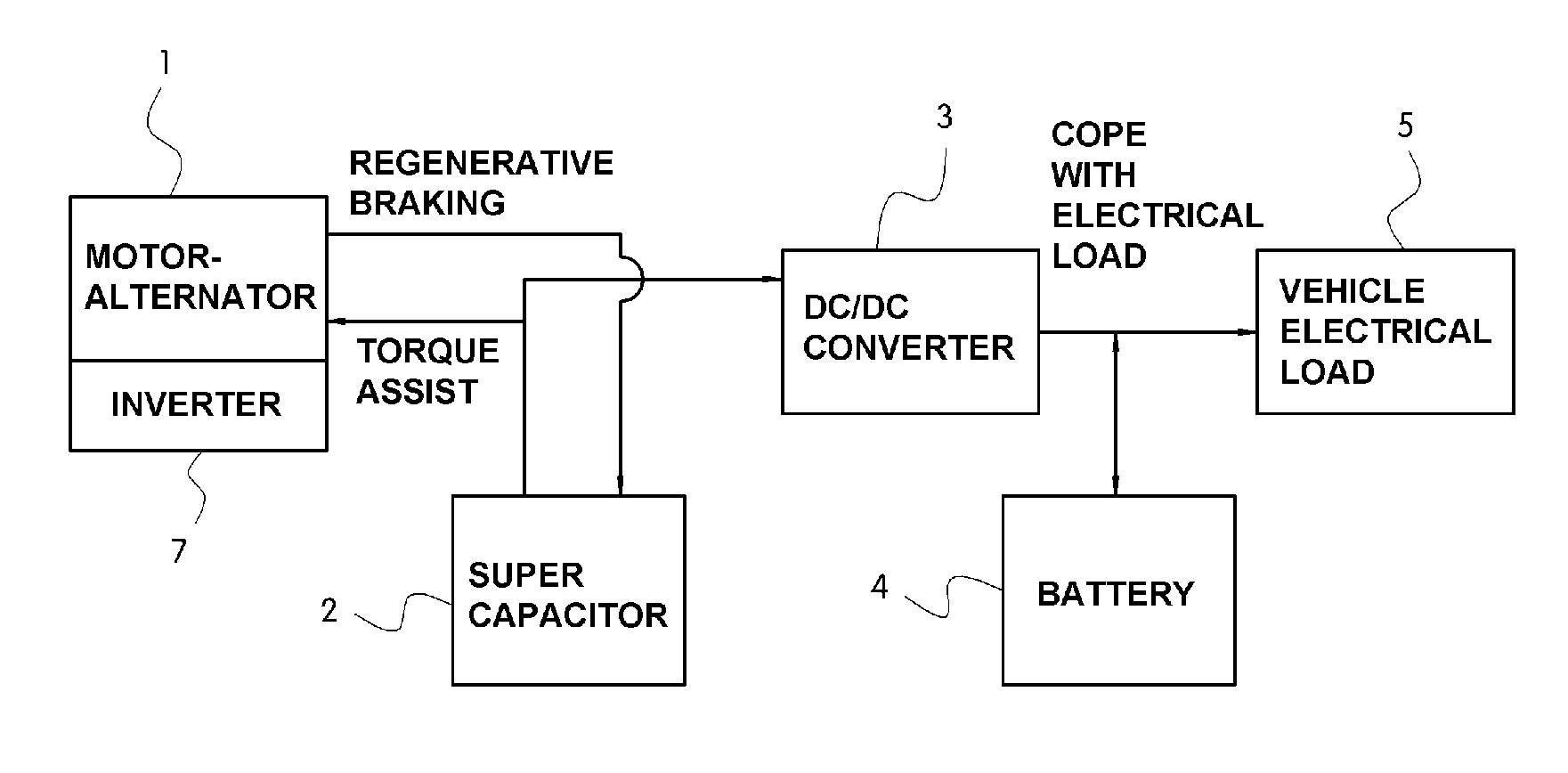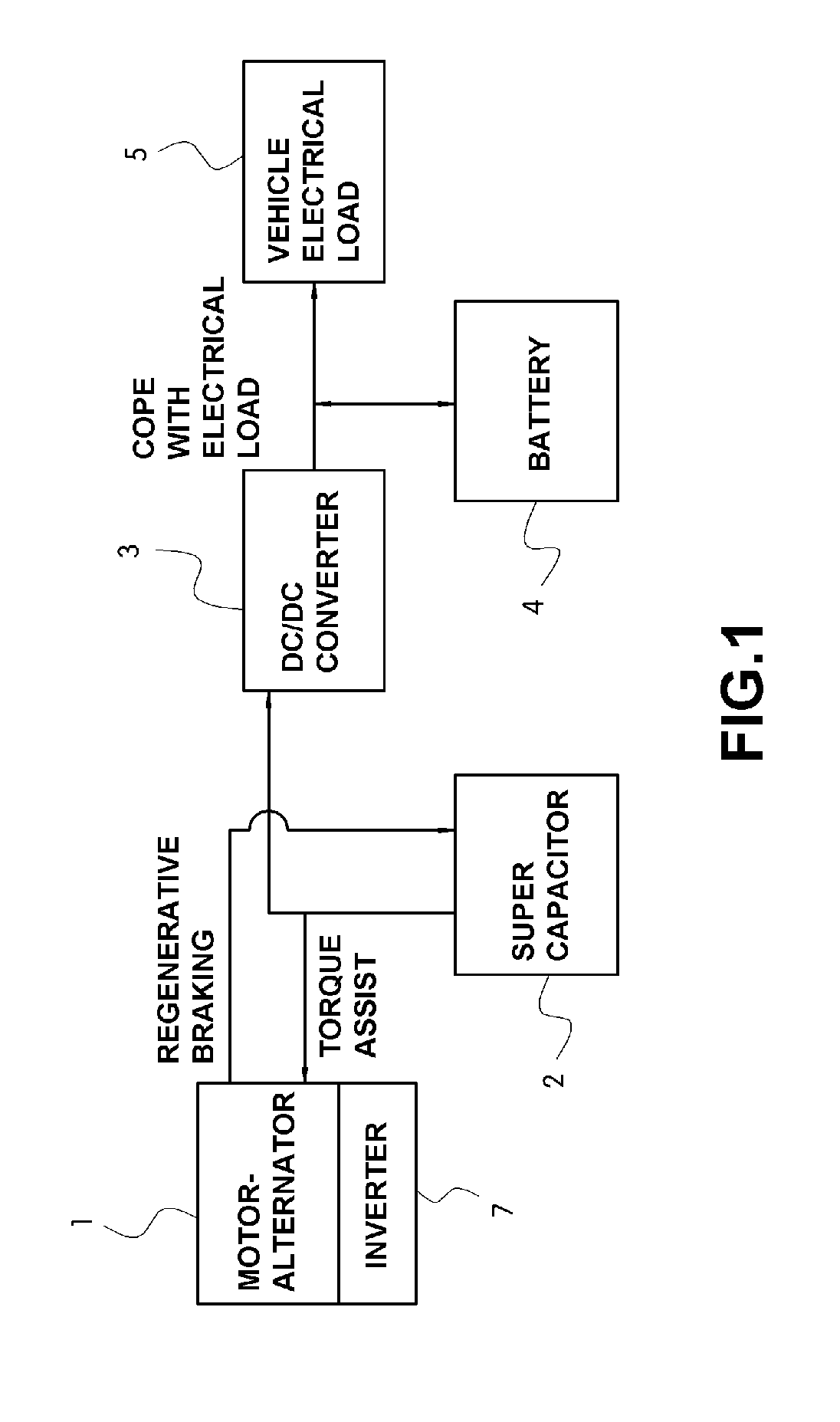Mild hybrid system and method for controlling the same
a hybrid system and hybrid technology, applied in the direction of engine-driven generators, vehicle sub-unit features, electric devices, etc., can solve the problems of reduced fuel efficiency, increased system cost and inefficiency, limited electrical energy recovered during regenerative braking,
- Summary
- Abstract
- Description
- Claims
- Application Information
AI Technical Summary
Benefits of technology
Problems solved by technology
Method used
Image
Examples
Embodiment Construction
[0027]Hereinafter reference will now be made in detail to various embodiments of the present invention, examples of which are illustrated in the accompanying drawings and described below. While the invention will be described in conjunction with exemplary embodiments, it will be understood that present description is not intended to limit the invention to those exemplary embodiments. On the contrary, the invention is intended to cover not only the exemplary embodiments, but also various alternatives, modifications, equivalents and other embodiments, which may be included within the spirit and scope of the invention as defined by the appended claims.
[0028]FIGS. 5 and 6 are schematic diagrams showing a mild hybrid system in accordance with an exemplary embodiment of the present invention, in which FIG. 5 shows a power transmission path when the electrical load used in the entire electrical load of a hybrid vehicle is smaller than a reference electrical load and FIG. 6 shows a power tr...
PUM
 Login to View More
Login to View More Abstract
Description
Claims
Application Information
 Login to View More
Login to View More - R&D
- Intellectual Property
- Life Sciences
- Materials
- Tech Scout
- Unparalleled Data Quality
- Higher Quality Content
- 60% Fewer Hallucinations
Browse by: Latest US Patents, China's latest patents, Technical Efficacy Thesaurus, Application Domain, Technology Topic, Popular Technical Reports.
© 2025 PatSnap. All rights reserved.Legal|Privacy policy|Modern Slavery Act Transparency Statement|Sitemap|About US| Contact US: help@patsnap.com



